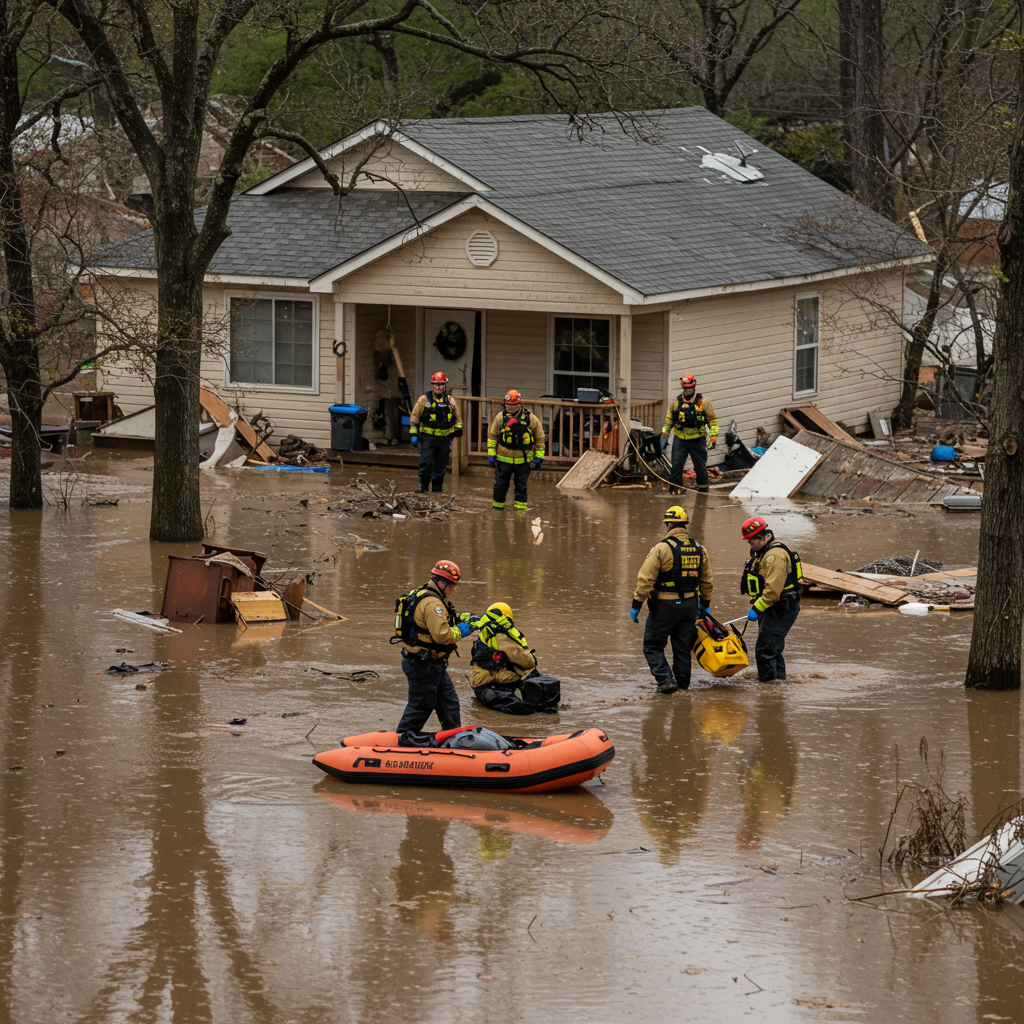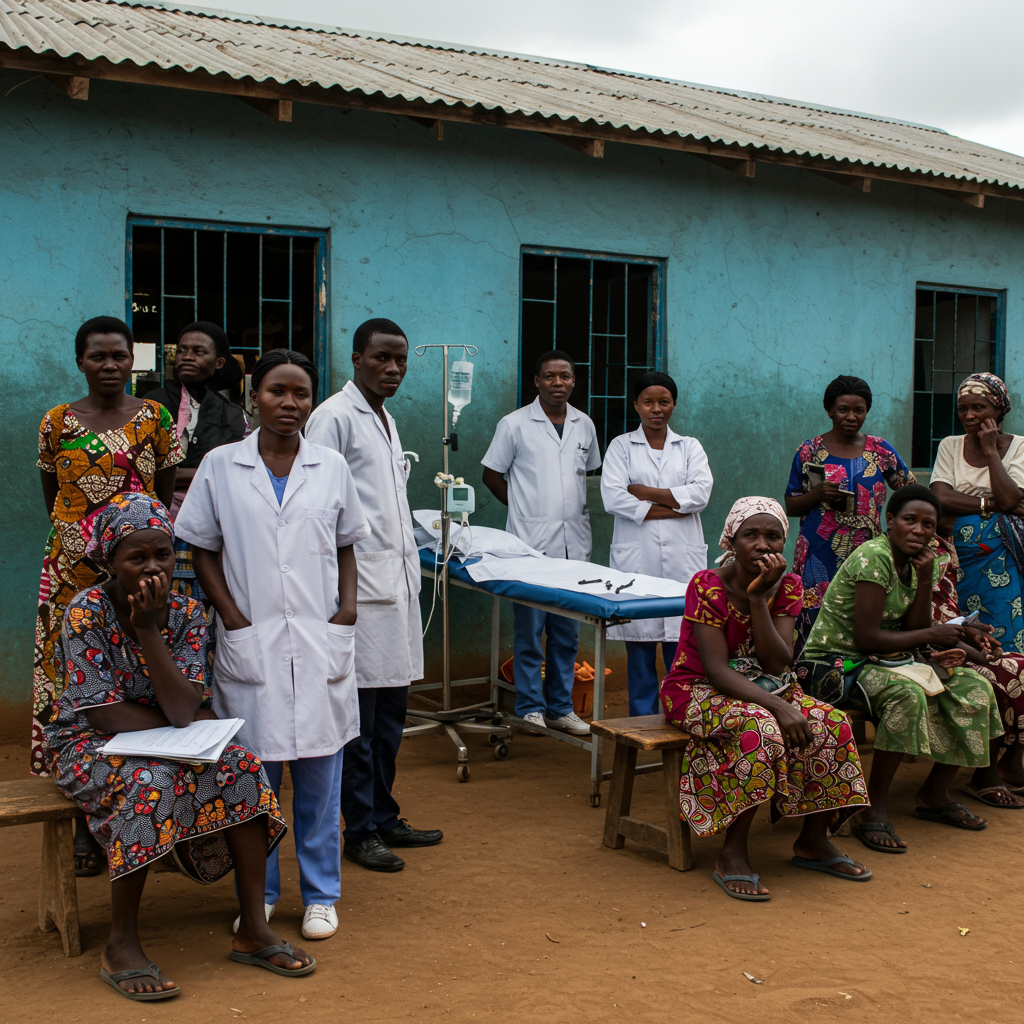Days after catastrophic flash floods ravaged parts of Texas, a somber reality grips Kerr county where a staggering 161 people remain unaccounted for. Hope for finding survivors dwindles as search and rescue teams navigate a landscape of unprecedented destruction. This disaster unfolded rapidly, turning tranquil waterways like the Guadalupe River into torrents that claimed lives and swept away everything in their path, primarily impacting communities during the July Fourth holiday weekend in 2025. The confirmed death toll across Texas has tragically climbed to at least 111, with Kerr County bearing the brunt of the loss, reporting over 90 fatalities alone. The scale of missing persons underscores the intense ferocity of the floodwaters and the challenges ahead for families and responders.
The Human Toll: Missing, Dead, and Devastated
The list of those still missing is heartbreakingly long. In Kerr County, 161 individuals are officially reported missing, though authorities caution this number could rise as more reports come in. The vast majority of Texas fatalities, specifically at least 87 deaths including 30 children, occurred within Kerr County lines. This central Texas region, known for being part of “Flash Flood Alley,” experienced the most severe impact. The confirmed death toll across the state stands at a minimum of 111 people. For families awaiting news, the passage of time feels agonizingly slow, with officials acknowledging that the prospects of locating additional survivors four days post-flood are rapidly diminishing.
Tragedy Strikes Camp Mystic
Among the missing are individuals connected to Camp Mystic, a Christian all-girls summer camp situated directly on the banks of the Guadalupe River. Five campers and one counselor from the camp are still unaccounted for. The camp was tragically impacted when a massive wall of water surged through in the early hours of Friday, July 4th, while hundreds were asleep. Cabins were demolished, submerged under eight feet of water in some areas, and children’s belongings were later found scattered miles downstream. Previously, Camp Mystic confirmed at least 27 girls and staff were among the confirmed fatalities in Kerr County.
Adding a complex layer, records show the Texas Department of State Health Services (DSHS) had reviewed and signed off on the camp’s emergency plans for disasters like flooding just two days before the catastrophe. An inspection report from July 2nd noted that plans were in place, and staff were trained, concluding “no deficiency/violation cited or noted within the scope of this inspection/visit.” State officials clarified their role is to assess plans against administrative codes, not predict the magnitude of a specific weather event. This detail highlights the unpredictable nature of the flood and raises questions about preparedness given the severity of the event.
Frantic Search and Grueling Recovery Efforts
Search and rescue operations are ongoing, described by Governor Greg Abbott as unrelenting. He has vowed that emergency crews “will not stop until every missing person is accounted for,” urging anyone with information about potentially missing individuals to come forward. The search is a massive, multi-agency undertaking involving local law enforcement, state agencies, border patrol, the FBI, and the National Guard. Over 250 responders are assigned to the Kerrville area alone.
Sophisticated resources are deployed in the difficult terrain. General Thomas Suelzer of the Texas National Guard detailed the use of Chinook and Black Hawk helicopters equipped with rescue hoists, with 13 Black Hawks participating, including support from Arkansas. Reaper drones are also aiding aerial reconnaissance. However, responders face immense challenges on the ground.
Navigating a Landscape of Destruction
Volunteers assisting in the search have described the scene with stark comparisons. One volunteer called the destruction a “nightmare,” worse than hurricanes and floods he’d previously experienced. Another likened the effort to “trying to find a single hay in a haystack” due to the vast trail of devastation spanning miles. The floodwaters created massive debris fields, making access difficult and hazardous for teams. Recovery efforts are described as “extremely treacherous, time-consuming,” and “dirty work,” with mud and debris hindering progress. There’s also a reported shortage of cadaver dogs needed to search the widespread area. Efforts often require manual labor, picking through debris by hand, as heavy machinery cannot access many areas, making little discernible impact despite tireless work. Compounding challenges, a private drone illegally operating in restricted airspace reportedly collided with an emergency helicopter, disabling critical equipment. Authorities have urged private boats to stay off the Guadalupe River to prevent interference with official search efforts.
Survivor Stories and Community Resilience
Amidst the tragedy, stories of survival and community support emerge. Justin Brown, who had lived along the Guadalupe River for over 25 years in a mobile home at the Blue Oak RV Park with his two young daughters and dog, lost his home when it was swept away. His RV was reduced to a puddle of debris. However, he recounted how his landlord and emergency workers managed to evacuate almost all residents from his park, counting his family among the fortunate survivors despite their immense loss. Looking out at the empty land where his home once stood, he expressed hope to rebuild and return as soon as possible.
Other personal accounts paint a vivid picture of the terror and immediate aftermath. A father, Thad Heartfield, shared the heartbreaking story of his last phone call with his son, trapped by rising water, before the line went dead; he later joined the volunteer search efforts. A 10-year-old Camp Mystic survivor described being evacuated and airlifted to safety, while her mother endured an agonizing wait for news. Texas country singer Pat Green lost his brother, sister-in-law, and two children in the flood. These personal tragedies highlight the profound human impact beyond the numbers. Survivors like Christian Fell and Diana Smith recounted narrow escapes from the rapidly rising water, illustrating the speed and danger of the flood event.
Questions on Warnings and Preparedness
The disaster has understandably led to questions regarding the adequacy of flood warnings and whether earlier evacuations could have saved lives. Experts suggest the tragedy resulted from a confluence of factors: extreme weather, the location of many holiday homes in vulnerable riparian areas, and the timing of the flood before dawn on a public holiday when many were likely asleep or unaware.
Governor Abbott addressed these concerns, stating that authorities did issue a storm warning and were aware of a potential flash flood threat. However, he emphasized that they “didn’t know the magnitude of the storm,” specifically that it would unleash a “30-foot high tsunami wall of water” – an event he said no one anticipated. When asked directly about “blame” for the high death toll, Abbott dismissed the term as the “word choice of losers,” using a sports analogy to suggest focus should be on recovery rather than assigning fault.
Discussion about emergency alert systems has emerged. While Kerr County officials were pressed about the lack of a countywide siren system, the Sheriff noted that locating the missing and identifying victims were current priorities. This contrasts with the nearby town of Comfort, which recently updated its siren system and successfully warned residents before the flood hit. State Representative Drew Darby has urged Governor Abbott to include improvements to emergency preparedness and a more sophisticated, statewide alert system on the agenda for an upcoming legislative session, underscoring the need for better warning infrastructure in the future.
Official Response and Political Engagement
In the wake of the disaster, state and federal officials have mobilized. President Donald Trump signed a disaster declaration specifically for Kerr County, accelerating access to federal aid and resources. The Federal Emergency Management Agency (FEMA) was deployed to provide assistance on the ground in the hardest-hit area. Governor Abbott conducted a flyover of Kerr County, describing the widespread destruction he witnessed as “catastrophic.” He reiterated the state’s commitment to supporting the Hill Country communities until recovery is complete, emphasizing that finding all missing persons is the immediate top priority. President Trump and First Lady Melania Trump were scheduled to travel to the flood-ravaged areas on Friday to assess the damage firsthand and meet with affected residents and responders. Senators Ted Cruz and John Cornyn also planned to join the presidential visit. They defended the response but indicated willingness to discuss federal funding and potential structural changes to FEMA. Senator Cornyn became visibly emotional on the Senate floor while speaking about the tragedy. Senator Cruz, who faced criticism for being on a planned trip during the disaster, also spoke about the devastation he saw at Camp Mystic, highlighting the political dimension of the response.
The cleanup effort required is immense, with residents and volunteers facing the daunting task of digging through thick mud and extensive debris. While ongoing weather forecasts suggest a lower risk of widespread heavy rain in the immediate future for the most affected areas, isolated thunderstorms remain a possibility. The ground and river systems are highly sensitive, meaning even moderate rainfall could trigger further flooding. The focus remains on the challenging search for the missing, supporting survivors, and beginning the long process of recovery and rebuilding in the communities shattered by this devastating event.
Frequently Asked Questions
How many people remain missing after the Texas floods in Kerr County?
As of the latest reports, at least 161 people are still reported missing in Kerr County following the flash floods. This county bore the brunt of the disaster, and while extensive search efforts are underway, authorities have indicated that hopes of finding further survivors are fading four days after the initial event.
What happened at Camp Mystic during the Texas floods?
Camp Mystic, an all-girls summer camp on the Guadalupe River, was severely impacted. Powerful floodwaters surged through the camp early on July 4th, destroying cabins. At least 27 girls and staff associated with the camp were among the confirmed fatalities in Kerr County. Five campers and one counselor remain missing.
What are the difficulties faced by search teams in the Texas flood recovery?
Search teams face significant challenges. The flood created vast fields of debris that are difficult and dangerous to navigate, hindering access. There is a reported lack of sufficient resources like cadaver dogs for the widespread search area. Manual searching is often required where heavy machinery cannot reach, making the effort extremely treacherous, time-consuming, and physically demanding. Air support also faces challenges, including potential interference.
(Estimated Word Count: 1170)




